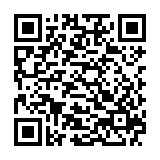Welcome to the fascinating world of cross-cultural communication! In our increasingly interconnected global community, understanding how to navigate differences in language and behavior is not just valuable but essential. This article will take you through the intricacies of cross-cultural communication, offering insights, tips, and strategies for effective communication across cultural boundaries.
The Importance of Cross-Cultural Communication
Bridging Cultural Divides
One of the primary reasons why cross-cultural communication is crucial is its ability to bridge cultural divides. Every culture has its unique language, customs, and social norms. Without an understanding of these differences, miscommunication and misunderstandings can arise, leading to ineffective communication and potential conflicts.
Enhancing Global Relationships
In today’s interconnected world, businesses, organizations, and individuals interact on a global scale. Effective cross-cultural communication enhances relationships by fostering mutual respect, empathy, and understanding. It enables people from diverse backgrounds to work together harmoniously and achieve common goals.
Understanding Cultural Differences
Language Variations
Language is a cornerstone of culture, reflecting values, beliefs, and societal norms. Understanding language variations is key to effective communication. For example, in some cultures, direct communication is valued, while indirect communication and nuances are more prevalent in others.
Nonverbal Communication
Nonverbal cues such as body language, gestures, facial expressions, and eye contact also vary across cultures. What may be considered acceptable in one culture might be interpreted differently in another. Being mindful of these nonverbal signals is essential for conveying messages accurately.
Cultural Values and Beliefs
Cultural values and beliefs influence behavior and communication styles. For instance, concepts like time, hierarchy, and personal space vary significantly across cultures. Awareness of these differences helps avoid misunderstandings and build rapport.
Strategies for Effective Cross-Cultural Communication
Develop Cultural Awareness
The first step in effective cross-cultural communication is developing cultural awareness. This involves learning about different cultures, their customs, values, and communication norms. Reading books, attending cultural events, and engaging with people from diverse backgrounds are valuable ways to enhance cultural awareness.
Practice Empathy and Open-Mindedness
Empathy and open-mindedness are crucial traits for successful cross-cultural communication. Putting yourself in others’ shoes and understanding their perspectives fosters trust and respect. Avoid making assumptions and be willing to adapt your communication style based on cultural context.
Be Mindful of Language and Tone
When communicating across cultures, pay attention to language choice and tone. Use clear and simple language, avoid slang or idioms that may not translate well, and adjust your tone to match the cultural context. Be respectful and considerate in your communication.
Seek Clarification and Feedback
Don’t hesitate to seek clarification if you’re unsure about cultural norms or if a message is being understood correctly. Ask open-ended questions, encourage feedback, and be willing to adjust your approach based on the response. Effective communication is a two-way process.
Case Studies in Cross-Cultural Communication
Business Negotiations
Imagine you’re a business professional negotiating a deal with a company from a different culture. Understanding their negotiation style, decision-making process, and business etiquette is essential for a successful outcome. You can build trust and reach mutually beneficial agreements by adapting your communication strategy and respecting cultural differences.
Intercultural Relationships
Many individuals form relationships with partners from different cultural backgrounds in a multicultural society. Effective cross-cultural communication is vital for maintaining harmony and understanding in these relationships. Respect for each other’s cultural identity, open communication about values and beliefs, and willingness to learn from each other contribute to a strong and lasting bond.
Final Thoughts
Cross-cultural communication is a dynamic and enriching journey that requires empathy, awareness, and adaptability. By embracing cultural differences and practicing effective communication strategies, we can bridge divides, foster meaningful relationships, and navigate the complexities of our interconnected world with confidence and respect. Cheers to embracing diversity and communication across cultures!





0 Comments